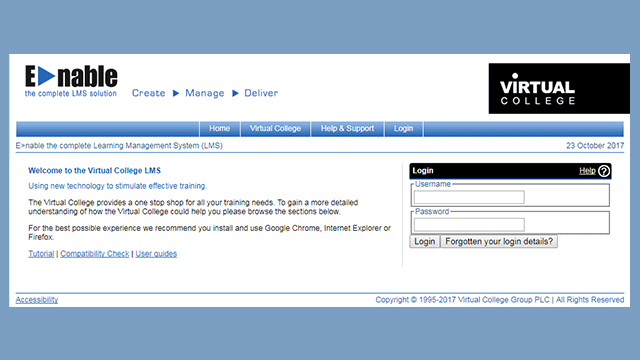What is safeguarding?
Despite the fact that safeguarding has existed as a concept for several decades now, many people are still not aware of what it involves. This article aims to give a detailed look at safeguarding is in regards to both adults and children, why it’s an important concept within society, what it aims to achieve and some of the legislation that underpins it.
What is safeguarding defined as for adults?
Safeguarding adults is defined in the Care Act 2014 as ‘protecting an adult’s right to live in safety and free from abuse and neglect’, and can often as a result of safeguarding children. An example of this would be a social worker who works closely with a specific child, but has noticed that lately, when she visits his house, there are signs of domestic abuse against the mother, as well as abuse of an elder. There are a number of considerations that would need to be made in this situation, and understanding what her responsibilities are would be key.
Overall, it is important for practitioners to always ensure the safety and security of anyone who they meet as part of their role – it is part of their responsibility. Therefore, even if a practitioner’s main focus is on a certain member of a family, they need to be aware of any issues within that family and ensure action is taken or a referral is made to safeguard the entire family. To achieve this, it is important to have effective crossover between different safeguarding areas and make sure there is joint working between different agencies. All the essential information on this topic is covered in our Safeguarding adults guide.
What is safeguarding defined as for children?
Safeguarding children is a phrase most people will have heard of but may find it difficult to define as it is such a broad topic. The Working together to Safeguard Children 2013 guidance by HM Government provides an explanation which can be expanded to suit a wide range of environments:
“Safeguarding children - the action we take to promote the welfare of children and protect them from harm - is everyone’s responsibility. Everyone who comes into contact with children and families has a role to play”.
This would imply that, while there will be a number of people acting in a official capacity around a child such as teachers, any responsible adult who comes in contact with a child who may be at risk has a level of responsibility to ensure their safety.
Why is safeguarding important?
We still see cases year in, year out, of vulnerable children and adults being abused in some form across the UK, whether that be sexually, financially, or in any other manner. Safeguarding is aimed at protecting these vulnerable children or adults from abuse and neglect in all circumstances.
Safeguarding as a general concept is to protect people from harm and abuse, both verbally and physically, with the best way to do that being to put appropriate measures in place. This often comes in the form of a framework, which allows those involved to follow certain steps and prevent negative outcomes in a tried and tested manner. It’s never the responsibility of just one or two people, but more of a principle that everyone must follow if they come into contact with vulnerable people – both children and adults.
When is safeguarding used?
Knowing about safeguarding and being trained in its implementation is a very useful skill to have. This is partly due to the fact that it can be used in a number of wide-reaching situations. The first, of course, is when looking after vulnerable people. Within this area there are several subcategories, such as children, older people and those with learning difficulties.
It is vitally important that anyone who is seen as vulnerable is protected, although all people within hierarchical structures should also be looked after. A common example of this is the workplace, where safeguarding helps to ensure that employees are not exploited or taken advantage of.
However, those that work in health and social care or education are those most likely to need to understand and implement safeguarding practices and principles. Where vulnerable people could be exposed to the risk of abuse, harm or neglect, safeguarding is used. Those working in such environments will almost certainly undergo formal safeguarding training to ensure that they
Six key Safeguarding principles
There are six key principles outlined in the 2014 Care Act, which condense the main elements of the legislation down into these categories.
- Empowerment- People being supported and encouraged to make their own decisions and informed consent.
- Prevention- It is better to take action before harm occurs.
- Proportionality- The least intrusive response appropriate to the risk presented.
- Protection- Support and representation for those in greatest need.
- Partnership- Local solutions through services working with their communities. Communities have a part to play in preventing, detecting and reporting neglect and abuse.
- Accountability- Accountability and transparency in safeguarding practice.
These six principles are explored in more detail within our dedicated article on the six safeguarding principles, discussing the benefits and limitations of each point as well as how they work together to effectively safeguard both children and adults.
What constitutes abuse?
In order to fully understand safeguarding and the role it plays, it is important to know what constitutes abuse. It can be verbal, physical, sexual, emotional, financial or even neglect and can lead to the victim being hurt, upset, frightened or manipulated into doing something they know is wrong or do not want to do. Another issue is that the person subjected to the abuse may find it hard to report the matter.
Types of Abuse and Neglect
Abuse can happen in many different forms and people often suffer multiple types of abuse at once. It is crucial to be able to identify what type of abuse someone is suffering in order to get the appropriate help as quickly as possible.
Adults
- Discriminatory abuse
- Domestic violence
- Financial or material abuse
- Modern slavery
- Neglect and acts of omission
- Organisational abuse
- Physical abuse
- Psychological abuse
- Self-neglect
- Sexual abuse
Children
- Emotional abuse
- Neglect
- Physical abuse
- Sexual abuse
Ways of safeguarding people
There are lots of ways to safeguard vulnerable people, but here are some of the most common forms:
- Analysing available information to decide on the level of risk posed
- Forwarding any concerns onto local authorities and the police
- Asking vulnerable people if they have any safeguarding concerns
- Carrying out investigations into safeguarding and writing reports into the findings
- Taking action in any areas where safeguarding is failing vulnerable people
- Following up on any measures put in place to ensure they’re working
- Reviewing safeguarding policies, processes and training to ensure they’re effective
As part of this, there’s a responsibility on employers and agencies to make sure that they are not hiring anyone inappropriate to work with vulnerable people. This includes carrying out police checks on all potential staff and volunteers, before they are left alone with children, elderly people and those with learning difficulties.
Legislation and responsibility
Since 2006, it has been enshrined in law that vulnerable people are to be kept safe. The Safeguarding Vulnerable Groups Act was passed in the wake of the Soham murders, when the two victims were targeted by their school caretaker. It also led to the foundation of the Independent Safeguarding Authority, which ensures that those listed on registers which bar them from working with vulnerable groups, including children, cannot gain employment in places where they would come into contact with them.
Working together to safeguard children
Anyone who has been working with children in the last decade or so is likely to be aware of Working Together to Safeguard Children – the government’s key document for everyone who works with, or carries out work related to, children. It provides parameters for inter-agency working and promotes the welfare of children from all backgrounds and in all settings. This is updated regularly, with Working Together to Safeguard Children 2018 the most recently updated document.
The mental capacity act and deprivation of liberty
People who lack the mental capacity to consent to essential care or treatment may need to be placed in a care home or hospital to receive the care or treatment they need, but there would need to be an established indication of lack of mental capacity in order for this can happen. This option may be utilised if it is felt the risk is too high for a vulnerable person to stay where they are, and the alternatives have been explored and exhausted. The DoLS protect the rights of these individuals when they are detained in a care home or hospital. For more information on the mental capacity act and deprivation of liberty read our full article.
The Care Act 2014
Finally, the Care Act 2014 is one of the most important pieces of legislation when it comes to protecting vulnerable adults. Primarily, it places responsibility on local authorities for safeguarding, and sets out a clear legal framework for how this happens. It takes a holistic approach, considering all of the different agencies that may be involved in giving someone care, as well as considering the individual, their friends, family and anyone that they regularly come into contact with.
Virtual College is proud to be a leader in delivering safeguarding training, and has in the past worked with care agencies, local authorities and even the police to help them understand how best to ensure they’re following safeguarding best practice. Click here to find out more about all of the safeguarding courses that we offer.











